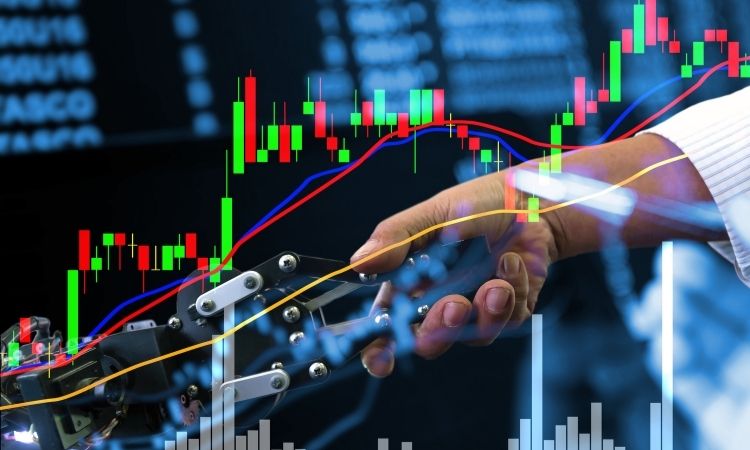The global Trade Surveillance System Market Size has witnessed substantial growth, driven by increasing regulatory mandates, the rise of digital trading platforms, and the need for financial institutions to maintain market integrity. In 2024, the market reached a valuation of approximately USD 1.36 billion, and it is projected to grow at a CAGR of 18.4% between 2025 and 2034, reaching a market size of around USD 7.36 billion by 2034.
Trade surveillance systems are essential for monitoring trading activities, detecting anomalies, and ensuring compliance with financial regulations. These systems leverage advanced technologies such as Artificial Intelligence (AI), Machine Learning (ML), and Big Data analytics to analyze massive volumes of trade data and flag suspicious transactions.
Key Benefits of Trade Surveillance Systems
- Regulatory Compliance: These systems help financial institutions comply with stringent regulatory requirements, reducing the risk of penalties and legal consequences.
- Fraud Prevention: They detect insider trading, market manipulation, and other fraudulent activities, ensuring market transparency.
- Risk Management: Real-time monitoring and predictive analytics allow firms to identify risks and mitigate them before they escalate.
- Operational Efficiency: Automating surveillance processes reduces manual intervention, leading to higher efficiency and accuracy.
- Enhanced Data Analysis: AI-driven surveillance systems can process and analyze vast datasets, identifying complex trading patterns that may indicate potential risks.
Market Overview
The trade surveillance system market is growing rapidly due to increasing trading volumes and the shift to electronic trading. The adoption of cloud-based solutions has further enhanced system capabilities, allowing firms to scale their surveillance operations efficiently. Additionally, the rise of cryptocurrency trading has added new complexities, increasing the demand for robust surveillance solutions to monitor digital asset transactions.
Key Industry Developments
- Regulatory Enhancements: The implementation of Consolidated Audit Trail (CAT) in the U.S. has significantly improved the monitoring of stock market trades and orders in real time.
- AI and ML Integration: Companies are leveraging AI-powered algorithms to improve surveillance accuracy and detect complex fraud patterns.
- Expansion of Cryptocurrency Surveillance: With the rise of Bitcoin, Ethereum, and other digital currencies, regulators are enforcing stricter trade monitoring, increasing the demand for specialized surveillance systems.
- Cloud-Based Solutions: Leading financial institutions are adopting cloud-based trade surveillance platforms to improve scalability, reduce costs, and enhance security.
Driving Factors
Several key factors are driving the expansion of the trade surveillance system market:
1. Increasing Regulatory Compliance Requirements
Regulatory authorities such as SEC, FINRA, ESMA, and FCA have introduced stringent guidelines, compelling financial institutions to adopt trade surveillance solutions.
2. Growth of High-Frequency Trading (HFT)
Instances of market abuse, including spoofing and layering, have increased, driving financial institutions to invest in advanced surveillance solutions to maintain market integrity.
4. Adoption of Advanced Technologies
AI and ML have enhanced surveillance capabilities, making it easier to detect suspicious activities in large datasets with greater accuracy and speed.
Impact of COVID-19 on the Market
The COVID-19 pandemic has had a mixed impact on the trade surveillance system market:
- Acceleration of Digital Trading: The pandemic led to a surge in online trading activities, increasing the need for effective surveillance solutions.
- Delayed Implementations: Some financial institutions postponed investments in surveillance technologies due to economic uncertainty.
- Rise in Cybersecurity Threats: The shift to remote work and digital platforms created new security vulnerabilities, compelling firms to adopt advanced surveillance and cybersecurity solutions.
Restraining Factors
Despite strong growth prospects, certain factors pose challenges to the market:
- High Implementation Costs: Deploying sophisticated trade surveillance solutions requires significant investment in infrastructure and expertise.
- Complexity of Compliance: Regulatory frameworks vary across different regions, making it challenging for companies to implement standardized surveillance solutions.
- Data Privacy Concerns: Financial institutions must comply with data privacy laws while implementing surveillance measures, adding complexity to their operations.
Market Segmentation
The trade surveillance system market is segmented based on several key parameters:
1. By Component:
- Solutions: AI-based trade surveillance, cloud-based surveillance platforms, on-premise solutions.
- Services: Consulting, support, and maintenance.
2. By Deployment Mode:
- On-Premises
- Cloud-Based
3. By Enterprise Size:
- Large Enterprises
- Small and Medium Enterprises (SMEs)
4. By End-User:
- Investment Banks
- Brokerage Firms
- Stock Exchanges
- Asset Management Firms
- Regulatory Bodies
Market Outlook
The trade surveillance system market is expected to grow significantly over the next decade due to:
- Rising adoption of AI-driven surveillance technologies
- Expansion of financial markets in developing economies
- Growing emphasis on cryptocurrency and blockchain-based trade monitoring
- Regulatory pressure to strengthen market integrity and transparency
Industry Trends
- Integration of Blockchain Technology: Blockchain enhances transparency and security in trading activities, reducing fraud risks.
- Use of Predictive Analytics: Predictive analytics helps identify potential fraudulent activities before they occur.
- Cloud Adoption: The shift towards cloud-based trade surveillance systems is expected to accelerate due to cost efficiency and scalability.
- Expansion in Emerging Markets: Developing economies are adopting trade surveillance solutions to enhance regulatory compliance and financial security.
Regional Insights
1. North America
- Leading market due to strict regulatory frameworks and high adoption of AI-based surveillance.
- Key players such as Nasdaq, NICE Actimize, and Aquis Technologies are based in this region.
2. Europe
- Strong regulatory mandates from ESMA and MiFID II drive demand.
- Increasing adoption of trade surveillance solutions among investment banks and financial institutions.
3. Asia-Pacific
- Rapidly growing financial markets in China, India, and Japan.
- Rising awareness about financial fraud and compliance regulations.
4. Latin America & Middle East
- Growing financial sector and increasing investments in trade monitoring solutions.
- Regulatory reforms promoting the adoption of advanced surveillance technologies.
Major Key Players
- Software AG
- NICE CXone Cloud Services
- IBM Corporation
- Nasdaq, Inc.
- OneMarketData, LLC
- ACA Group
- IPC Systems, Inc.
- Sia Partners
- Aquis Exchange
- eFlow Ltd.
- Others
Opportunities
- Growing demand for AI-powered trade surveillance
- Rising adoption of cloud-based solutions
- Expansion into emerging financial markets
- Development of surveillance solutions for cryptocurrency trading
Challenges
- Managing large volumes of trade data
- Ensuring compliance with diverse global regulations
- Addressing cybersecurity threats in digital trading
Restraints
- High initial investment costs
- Complexity in integrating with existing financial systems
- Concerns over data privacy and security
Scope of the Market
The trade surveillance system market is expected to expand significantly in the coming years as regulatory bodies emphasize stricter compliance measures and financial institutions seek advanced technologies to prevent fraudulent activities. AI-driven automation, blockchain integration, and predictive analytics will continue to shape the future of trade surveillance, making it an indispensable part of the financial ecosystem.



